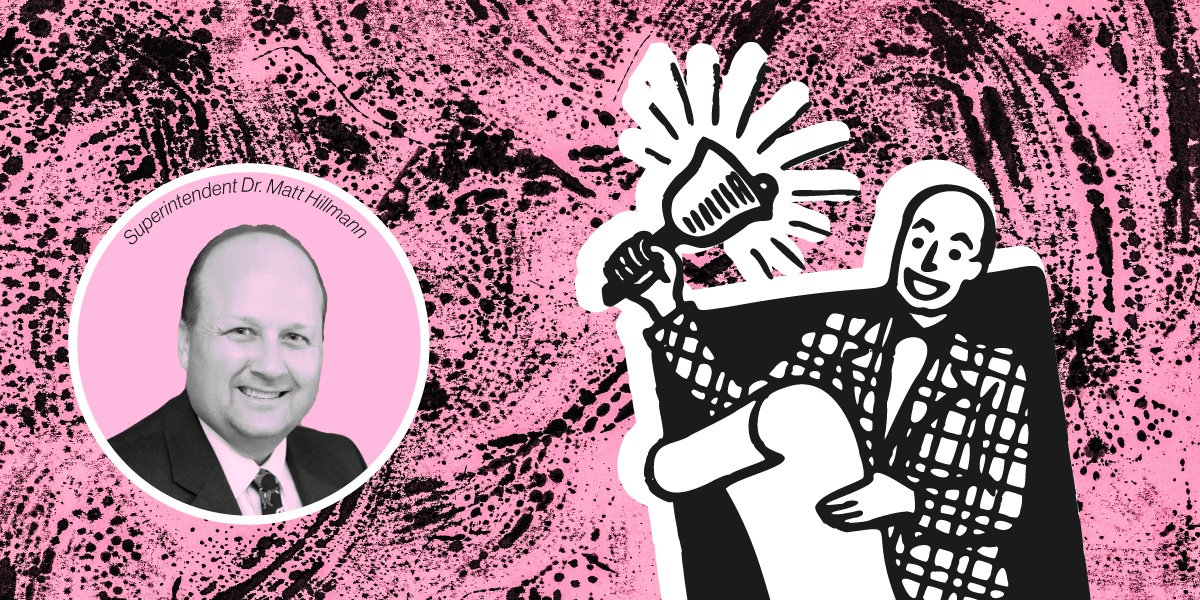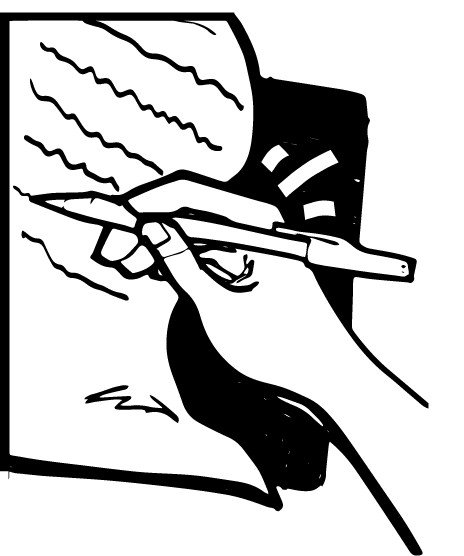Dr. Matt Hillmann: On the Same Page
Minnesota’s Dr. Matt Hillmann shares how he maintains a healthy relationship with his district’s teachers union.

Dr. Matt Hillmann has nearly 30 years of experience in education, with the last seven spent leading Northfield Public Schools in Minnesota. In fact, he was named the state’s 2023 Superintendent of the Year, praised by the Minnesota Association of Administrators as “a fierce leader and advocate for equity and student achievement.” In Northfield, Hillmann’s dedication to supporting students’ futures has helped close learning gaps and expand their broad range of offerings, from foreign language immersion programs to advanced placement courses to strategically leveraged partnerships with local colleges. And though Northfield has high expectations for their teachers, Hillmann is devoted to providing them with the supports they need to thrive. He is especially proud of the strong relationship he maintains with their teachers union, the Northfield Education Association.
The education workforce shortage is consistently present in headlines across the nation. Ideas about what school districts can do to recruit and retain high-performing employees in an increasingly competitive market are plentiful. In Northfield Public Schools, like all school districts, we have been seeking to recruit and retain the best teachers and staff since long before workforce shortages became a common discussion topic. One strategy to accomplish this goal is employee engagement. And a big part of engaging employees is having a productive relationship with their collective bargaining organization—often referred to as their union.
While the district-union relationship is inherently adversarial, it does not need to be acrimonious. When I was offered the district’s Director of Human Resources position in 2009, I considered declining it because I was concerned that I’d consistently be at the center of an “us vs. them” vortex. Dr. Chris Richardson, a mentor and our superintendent at the time, assured me that I would do well in the role and that he would help me acclimate to it. In the 14 years since, I have been proud of the productive relationship we’ve established with our teachers union, the Northfield Education Association. I believe that this relationship is an asset to our district and community.
The concept of relationships is sure to be part of every discussion about education, and this situation is no different. A strong working relationship with union leadership is essential. Still, what it takes to build, maintain, and—when necessary—repair relationships is often not explored deeply enough.
In the context of the relationship between school districts and unions, trust is often viewed as one-way, with the focal point being the district earning the union’s trust. But the best relationships are a result of mutual trust. The trust that the district has in the union is also critical for success. I assert there are a few areas of focus that, if done well, can lead to a productive district-union relationship.

Communicate.
Communication is foundational to quality relationships, and listening is the cornerstone of communication. Listening is a complex skill—we need to listen both for what is being said and for what isn’t.
Strong communication also requires regular connections. Our director of human resources and I meet with the union president and (often) the vice president twice per month. The agenda is simple—what is the union hearing from its members, and what does the district need to bring to the union’s attention? These issues can range from individualized matters, such as a teacher’s scheduled duties, to much larger and more complex topics, such as reductions in workforce.
It’s also important to check in with the union between our scheduled meetings in order to create an ongoing dialogue and ensure that accurate information is promptly available. Disagreements can arise when assumptions are made about a decision, direction, or initiative. Check-ins are a great way to prevent that outcome. They can be as simple as asking our union president what they are hearing from our employees and addressing any issues that require immediate attention.
Clarity is also a foundational component of any productive district-union relationship. When communication is crystal clear, people have the necessary information to understand a situation to its fullest extent. While there may be disagreement about a specific decision, people at least have information about why it was made.
When disagreement does arise, it’s important to communicate about that as well. No one likes complaints, but they are an opportunity to improve. When we receive a complaint through the union, I seek to hear the “request in the complaint.” In most cases, the request is to relieve burdens or obstacles that a staff member believes are preventing them from doing their best work for our students. In many circumstances, the issue they want solved is actually a manifestation of a different problem. Addressing the root problem’s causes often solves multiple issues at once. Listening to the “request in the complaint” can be difficult work. But it can also increase trust between the union and the district—because we have worked through the core issue rather than just the surface of the complaint.
Communication also means doing our best not to surprise each other. Transparency is critical in a trusting and productive district-union relationship. Bad news rarely ages well, so ensuring that our union president knows when a problem is brewing is a priority. Our union president is similarly committed to ensuring that our district leadership understands when a concern is developing. This commitment to transparent and prompt communication allows minor issues to be addressed before they become significant problems.

Follow through and adhere to the contract.
Another aspect of a trusting district-union relationship is following through. As district and union leaders, we endeavor to do what we say we will do when we say we will do it. Nothing is more foundational in this concept than adhering to the union contract.
There is no faster way to disintegrate trust between the district and the union than for the district not to follow what has been agreed to in the union contract. This document has been painstakingly negotiated to ensure clarity in the terms and conditions of employment. While it may be expedient for administrators to cut corners in this area, that is a bad strategy. But unintentional contract violations can also occur, and ensuring they are identified and corrected is vital to maintaining a productive working relationship.
The union has a vested interest in its members following the contract, too. Our union president and their member rights advocates have been clear with their membership about what the contract means in certain situations, sometimes to the dissatisfaction of their members. When union leadership acts with integrity, following through on the agreements made at the bargaining table, they’re doing the hard work necessary to maintain the district’s trust.
Of course, the district and the union may occasionally need to address individual situations that run contrary to the contract. When there is mutual agreement that the written contract may not adequately address a particular situation, tools like a memorandum of understanding allow the district and the union to address these specific circumstances. One example could be an agreement to extend the district health insurance contribution for a long-time employee taking leave to address a personal issue—even though the timing wouldn’t require the district to do so. These agreements are usually mutually beneficial and do not create a precedent or interfere with a past practice.
There are times, though, when we can’t agree on how the contract should be operationalized in a specific situation. While the term “grievance” can be viewed as contentious, it should be considered for what it is intended to be: a process used when the district and union cannot agree on how the contract should govern a situation. Allowing the grievance process to work when needed is essential. It shows the reverence that the district and union have for the contract. When we’ve experienced grievances (thankfully, very few), the process has helped bring the issue to resolution.

Discipline should prioritize predictability and fairness.
In the district-union relationship, there’s no area more ripe for adversity than employee discipline. In my experience, the union desires to ensure due process for its members who are accused of wrongdoing or low performance. Most people want nothing different in their workplaces. An employee reasonably wants to share their side of the story when accused of misconduct. They also want to be made aware of deficiencies in their performance so they have the opportunity to improve.
A system that prioritizes predictability and fairness when it comes to discipline is critical to the district-union relationship. Systematizing your response to allegations against employees can offer numerous benefits. A quality process is founded on impartial investigation and fairness. This ensures that the employee’s rights are protected and that they can share their side of the story. We guarantee that union representation is available for our employees during any investigatory interview, even in circumstances when it wouldn’t be required. This practice gives the union confidence that their members are getting the due process protections outlined by the law or by their contract (if applicable).
Every industry has low-performing employees. Most union members are as troubled about poor performance as district leadership is, but they also want a fair, predictable process for addressing it. Again, clarity is critical in handling these situations. The district should adopt clear performance standards and implement a system for offering feedback about an employee’s performance according to those standards. When someone isn’t meeting expectations, administrators have a responsibility to notify the employee, provide an opportunity for development through a performance improvement plan, and regularly review progress with that employee. In my experience, if an employee hasn’t shown sufficient improvement, the union has supported the district’s efforts toward terminating that employee’s contract.
Admit failure and learn from it.
We work in a human-centered industry. All humans make mistakes—even people who are well-intentioned, properly prepared, thoughtful, and skilled. Organizations can’t move forward without taking risks, and risks can lead to failure. We must take responsibility when mistakes are made.
In my district, a recent priority-based budget reduction process resulted in a proposed energy savings policy. This policy was intended to reduce our operational budget to minimize staffing reductions—but I didn’t seek enough staff feedback about how it would impact employees’ day-to-day experiences.
Our efforts to develop a strong organizational culture are evident in these situations. Ultimately, our staff members did let me know how the energy savings policy could impact them. In fact, our employees were willing to directly discuss this without feeling like representatives from their union were needed. As a result, we paused the policy adoption. I scheduled eight listening sessions and accepted their direct feedback without judgment or excuse. I promised we would not bring an updated policy back until the fall semester so staff could be more involved in developing it.
Correcting mistakes can be painful. But modeling humility by admitting your mistakes, asking for forgiveness, and rebooting your decision-making process will lead to even greater trust with your employees and their union.
Center each other’s best interests.
Productive relationships with teachers unions are attainable when trust is firmly established. Trust is not a destination; it is a state of faith in each other to do the right thing and a process of centering each other’s best interests. How do we earn trust? By being trustworthy. We build trust by communicating clearly, following through on what we say we will do, honoring our agreements, solving problems collaboratively, and taking responsibility when we make mistakes.
Don’t confuse developing a productive relationship with your teachers union as becoming a “pushover.” The contrary is actually true—the effort to build and maintain this productive and trusting relationship creates the conditions necessary for working together to address whatever difficult issues arise. It’s a tremendous return on investment for our districts and communities.
Subscribe below to stay connected with SchoolCEO!


